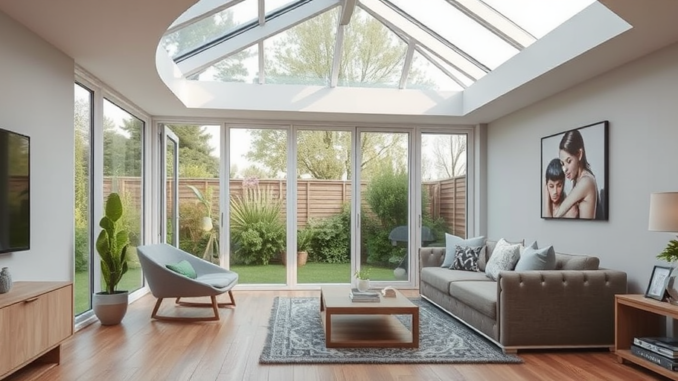
Summary
This article guides you through the decision-making process of selecting the ideal garden extension, whether it’s a conservatory, orangery, or garden room. It clarifies the distinctions between these structures and offers practical advice for determining the best fit for your needs and home. By understanding the unique characteristics of each option, you can create a space that seamlessly blends indoor and outdoor living while enhancing your property’s value and your overall enjoyment.
Main Story
Adding a garden extension, it can really transform your home. It’s not just about more space, it’s about bringing the outside in, and lets be honest who wouldn’t love that? But, when you’re diving into this project, choosing between a conservatory, an orangery, or a garden room, it can feel… well, confusing. So, lets break it down, shall we?
First Things First: What’s the Difference?
-
Conservatory: Think glass, and lots of it. We’re talking a fully or mostly glazed roof – over 75%, typically. You’ve usually got a low brick wall at the base. The main draw? It’s like stepping into a light-filled, panoramic view of your garden, which is lovely. The downside? They can sometimes be prone to temperature swings – think super hot in the summer, chilly in the winter. I remember visiting a friend’s conservatory on a scorching July day and it felt like a sauna, so definitely something to bear in mind.
-
Orangery: Now, an orangery is a bit more refined. It’s got a solid, insulated perimeter roof, often flat, with a central skylight or a series of them. This provides better temperature regulation than a conservatory, giving you the best of both worlds, some natural light with decent insulation. Plus, the brickwork tends to be more substantial, creating a nicer transition from the house to the garden, and historically they were used to protect citrus trees in colder climates. Makes you feel a bit fancy, doesn’t it?
-
Garden Room: This one’s the maverick. It’s a standalone structure, totally separate from the house. You’ve got the most flexibility with design, materials, and how you use the space. Timber, brick, composite materials – it’s all on the table. Sure, it may have big windows, but it’s the fact that it’s independent, that’s its main difference.
Alright, Let’s Talk About You
So, what are your needs and priorities here? You’ve got to think about:
-
How Will You Use the Space? Is it a dining room? Maybe a home office? A playroom for the kids? Or maybe just a chill-out zone, its up to you really.
-
Budget: Conservatories tend to be the most budget-friendly option, Orangeries next, and Garden rooms are typically the highest. It’s important to be realistic here, what can you actually afford?
-
The Dreaded Planning Permission: While smaller conservatories and garden rooms might sneak under the permitted development rules, larger builds or an orangery often require the green light from your local council, so definitely check this before you start planning. I’ve heard some real horror stories!
-
The Look: Which of these options really vibes with your home’s current style? You want it to feel like a natural extension, not an awkward add-on.
-
Energy Efficiency: If keeping it cozy (or cool) year-round is a must, then Orangeries and garden rooms generally give you better insulation compared to conservatories. Worth considering, eh?
Making the Call
-
Want loads of natural light on a budget? A conservatory is your best bet. It’s hard to beat for pure sunlight and views.
-
Want light and good temperature control, plus a more cohesive feel? Go for an orangery. It’s a solid choice.
-
Fancy a completely separate space with total creative freedom? A garden room is the way to go. Think of it like a blank canvas.
Making the Most of Your Extension
Regardless of what you decide, here’s some extra advice to make the most of your new space:
-
Pick your furniture wisely: It should fit the style of the room and the way you want to use it.
-
Go green! Plants really help to soften the lines between inside and outside. They can completely change the feel of a room.
-
Think about temperature and light: Blinds, shades, or maybe even climate control will keep your space comfy, all year round.
-
Make a seamless connection: You want it to be easy to get from your home to the new extension, encouraging you to actually use it.
So, there you have it. Choosing the right garden extension can be a big decision, but, by taking your time and thinking about your needs and all these different options, you can build a space that’ll make your house feel bigger, brighter and all round more enjoyable. Happy building!


Be the first to comment